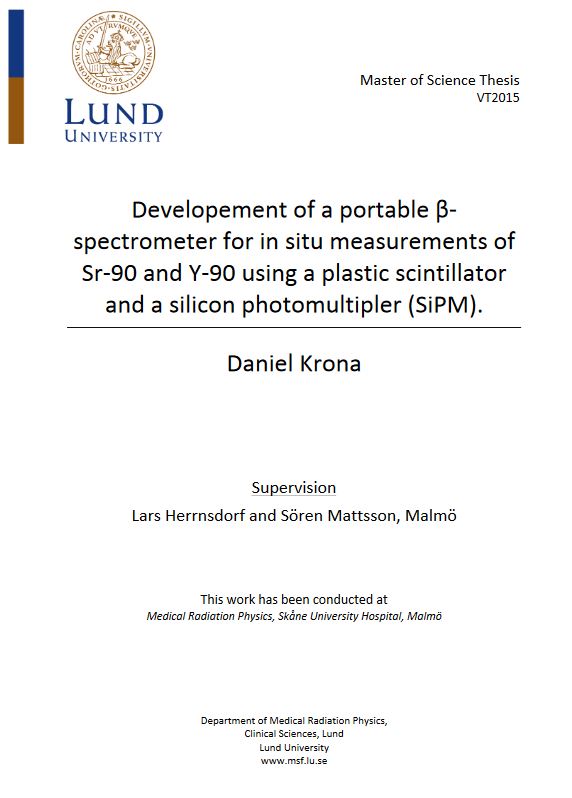⏳️ Reading Time: 4 minutes
Author: Krona Daniel
Institute: Lund University
Abstract
In this report the characterization of a Silicon Photo-Multiplier (SiPM) detector was done in order to estimate the main features of the detector. The breakdown voltage, the gain, the dark Count Rate as well as the optical crosstalk of the detector were successfully obtained.
Purpose of the experiment:
In the event of a nuclear weapon detonation or a power plant accident radionuclides will deposit on the ground. It is then important to identify and quantify the radionuclides to obtain information necessary for radiation protection efforts like relocation and decontamination. Radiation protection instruments with beta probes can be used as search instruments but the small surface of the probe and the lack of separation of beta energy are limitations concerning identification and quantification of the important radionuclide Sr-90. The present alternative for Sr-90 analysis is to collect grass and soil samples and perform time consuming radiochemistry and measurements. Using a plastic scintillation detector, Sr-90 and the daughter radionuclide yttrium-90 can be identified and quantified. Sr-90 is of special interest due to its uptake and accumulation in the human skeleton. The high beta energy from Y-90 can be utilised to discriminate this radionuclide from other pure beta emitting radionuclides with lower beta energies. Photomultiplier tubes (PMT) have been the common choice for light collection from scintillating materials for a long period of time. The development of alternatives has been successful the last years in form of silicon photomultipliers (SiPM). Silicon photomultiplier is a photodiode consisting of multiple cells operating in Geiger mode. The setup consisted of a 15 mm thick plastic scintillator disc where a 1.5 meter long wavelength shifting fibre was wired around the edge surfaces and coupled to a SiPM mounted in a power supply and amplification unit. The signal was processed by a digitizer and the data was analysed using a laptop PC.
The measurements were performed with a Sr-90/Y-90 source, a Cs-137 source and a Co-60 source. Uniformity, protection from ambient light, temperature dependence was investigated. The SiPM sensitivity to beta particles was tested by exposing the SiPM to Sr-90/Y-90 without a detector. The evaluation of the CAEN SP5600 kit was done by using the mini spectrometer and the three detectors for collection of spectra from Sr-90/Y-90 and Cs-137. The setup was not totally light tight, but the ambient light wouldn’t disturb the measurements of radionuclides. The setup was uniform regarding collection of beta particles from a Sr-90/Y- 90 source, but the SiPM could yield a signal if it was hit by beta particles directly. The detection limit is currently relatively high, but there is a potential for considerable improvements. Regarding the evaluation of the CAEN SP5600 kit, the associated mini spectrometer containing a 3 x 3 mm2 SiPM and three different types of detectors were used. This resulted in low detection limits and easy identification and quantification of Sr-90/Y-90. The conclusion is that it is possible to measure Sr-90/Y-90 using a plastic scintillator and a SiPM under laboratory conditions.



